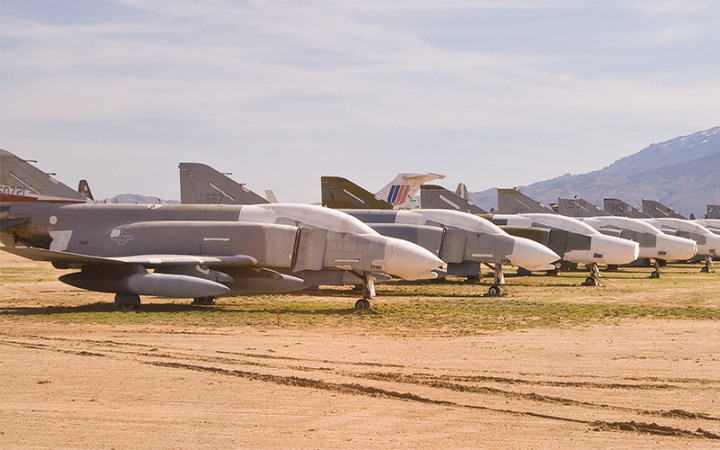Today’s Wonder of the Day was inspired by Wonder Friend. Wonder Friend Wonders, “What happens to old airplanes?” Thanks for WONDERing with us, Wonder Friend!
Have you ever gone with adult friends or family members while they were shopping for a new vehicle? If so, you know most car lots sell a wide variety of vehicles. You might find cars from many different brands all being sold on the same lot. You may have also noticed that both brand new and used cars were up for sale.
Many times, when people buy a new car, they trade in their old one. Those trade-ins can then be resold to other people looking for a different vehicle. If a car or truck is too old, though, it might end up in a salvage yard. There, it’s used for parts or crushed and recycled for scrap metal.
You can find all kinds of vehicles at a salvage yard, too. There may be cars, trucks, and even buses. That got us WONDERing…what about airplanes? What happens to aircraft when they get too old to fly or aren’t needed any longer?
Most aircraft tend to have long life cycles. Still, they don’t last forever. They usually end up in a place known as an aircraft graveyard or boneyard.
The world’s largest aircraft boneyard is the 309th Aerospace Maintenance and Regeneration Group (AMARG). It’s part of the Davis-Monthan Air Force Base in Arizona. This boneyard holds old military and government aircraft.
At the 309th AMARG, you’ll find 4,400 airplanes, jets, and helicopters. The boneyard even houses old space shuttles from NASA! Some of the aircraft are stored for future use. Others are scrapped for usable parts and recyclable materials. Some fighter jets are even turned into drones.
When aircraft arrive on site, they are stripped of weapons, electronics, and classified hardware. They are then washed thoroughly. Finally, they’re sealed to protect them from the elements. Most aircraft boneyards are located in dry desert areas. The dry climate makes them ideal places to store these large metal machines.
When aircraft reach the end of their lives, the workers at aircraft boneyards will take them apart for recycling. Have you ever thought about how complex airplanes are? A Boeing 747 contains over six million parts, 170 miles of wiring, and nearly 150,000 pounds of aluminum.
Workers must first get rid of any hazardous materials. Then, valuable parts that can be used in other airplanes are removed. Such parts might include flight controls, engines, doors, landing gear, recorders, etc.
Finally, the remaining valuable materials are recycled. This includes aluminum, copper, steel, magnesium, and titanium. About 85 percent of most airplanes can be recycled successfully.
Have you ever been to a salvage yard? How about an airplane boneyard? It could be a lot of fun to see all those huge aircraft being taken apart! Just think—the next plane you board could be made of parts from aircraft past.
Standards: CCRA.L.3, CCRA.L.6, CCRA.R.1, CCRA.R.2, CCRA.R.4, CCRA.R.10, CCRA.SL.1, CCRA.W.2, CCRA.L.1, CCRA.L.2, C3.D2.Geo.3




